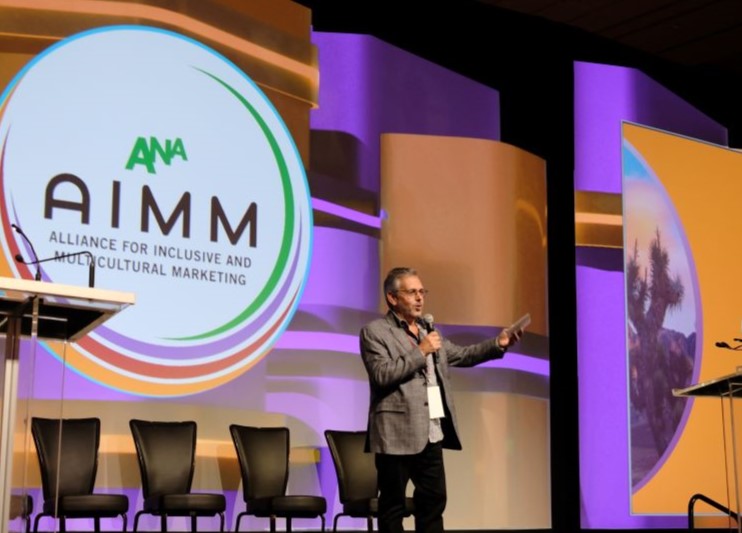Diversity and Inclusion in Advertising: A Call to Action at ANA’s Multicultural Summit

In the last six months, the marketing and advertising industries have felt the pressure to minimize – or even eliminate – their inclusive efforts.
Paramount's newly released "The Industry In Progress Report," showcased the significant decline in the representation of Black and Hispanic individuals in advertising. Black representation decreased from 16.5% to 14.3%, while Hispanic representation dropped from 9% to 5%. The decline in Hispanic representation was most disproportionate compared to their population size and buying power of $2.1 trillion. In contrast, the white population remains overrepresented relative to its share of the total population.
The report also highlighted the need to focus on disability representation, including individuals with mental and psychological disabilities, Middle Eastern, and South Asian people.
The Association of National Advertisers (ANA) understands the importance of multicultural advertising and held its twenty-fifth Multicultural Marketing and Diversity Conference in October. This hybrid event, held both in-person and virtually, served as a platform to explore effective strategies for reaching multicultural markets and to engage in critical discussions about industry challenges.
In one session, “Candid Discussion on Inclusion in the Marketing and Advertising Industry,” experts and advocates delved into the impact of recent Supreme Court rulings on diversity and inclusion efforts in advertising, the waning representation of diverse audiences in advertising, and the crucial role of internal champions and education.
The panel, moderated by Jack Myers, Founder and Media Ecologist at MediaVillage Education Foundation, included Genny Hom-Franzen, Executive Director at the Asian American Advertising Federation (3AF); Meghan Bartley, Director of Agencies, Brands, and Engagement at GLAAD; and Ozzie Godinez, CEO/Co-Founder of PACO Collective.
The Impact of Supreme Court Rulings
The opening remarks of the panel set the stage for a candid discussion. The panelists expressed concerns about recent Supreme Court rulings on women’s rights and their implications for diversity and inclusion initiatives. While the legal rulings primarily revolve around issues related to education and affirmative action, their ripple effects have subsequently affected advertising.
One fear is that the rulings could be interpreted as a license for corporations to backtrack on their commitment to diversity and inclusion, both in representation in marketing as well as hiring.
Myers cited a recent survey that The Myers Report conducted of 4,200 industry professionals. Of those, sixty-two percent had been in the business for fewer than eight years, yet the diversity of professionals has remained unchanged.
“Overall, as an industry, we’re not doing enough,” Myers declared.
The Need for Internal Champions and Education
One of the key takeaways from the panel was the need for internal champions within organizations. These champions are individuals who can advocate for diversity and inclusion initiatives and push for change from within. They play a pivotal role in shifting mindsets and corporate practices.
However, the responsibility for change should not be on internal champions alone. “Don't go and grab the one person in your organization that represents that community and make them responsible for it,” emphasized Bartley.
Education is another critical component of a more inclusive advertising industry. Many industry professionals remain unaware of the impact of diversity and inclusion efforts. According to Paramount’s study, 53% of consumers exhibit greater loyalty to brands that reflect individuals like themselves, while 58% are inclined to purchase from brands that similarly represent their demographic.
Panelists highlighted the importance of providing education and evidence to support the business case for diversity. The U.S. buying power of marginalized communities is over $6.75 trillion, which is a compelling argument to corporate America for change.
Moving Beyond Checkmarks
Authenticity is crucial in the process. This means more than just putting out statements or launching campaigns; it involves making genuine efforts to be a part of and support these communities.
While the panel acknowledged the progress that has been made in the industry, it also recognized that the advertising landscape is at a critical juncture.
“We’re stuck on the ‘how,’” said Bartley.
One way to combat this is to ensure advertising teams have the right experts in the room. Having the right people in the room is critical to building authentic stories. Godinez believes that “end-to-end inclusivity” starts with hiring. Another way to ensure this is by working with minority-owned agencies or non-profits like GLAAD.
“Having a crisis plan is your number one priority,” said Bartley. “Make sure you have experts in the room that can help you curate your plan so that you are comfortable making decisions in any situation.”
Hom-Franzen echoed Bartley’s sentiment about consulting with experts and noted that 3AF is the leading resource for Asian advertising and marketing.
It’s crucial for the advertising industry to recognize that diversity and inclusion are not optional; they are essential for the growth and sustainability of businesses. As the panel concluded, the call to action to the advertising industry was clear: commit to authentic change and make diversity and inclusion more than a checkbox – make them the heart of advertising.
Posted at MediaVillage through the Thought Leadership self-publishing platform.
Click the social buttons to share this story with colleagues and friends.
The opinions expressed here are the author's views and do not necessarily represent the views of MediaVillage.org/MyersBizNet.


